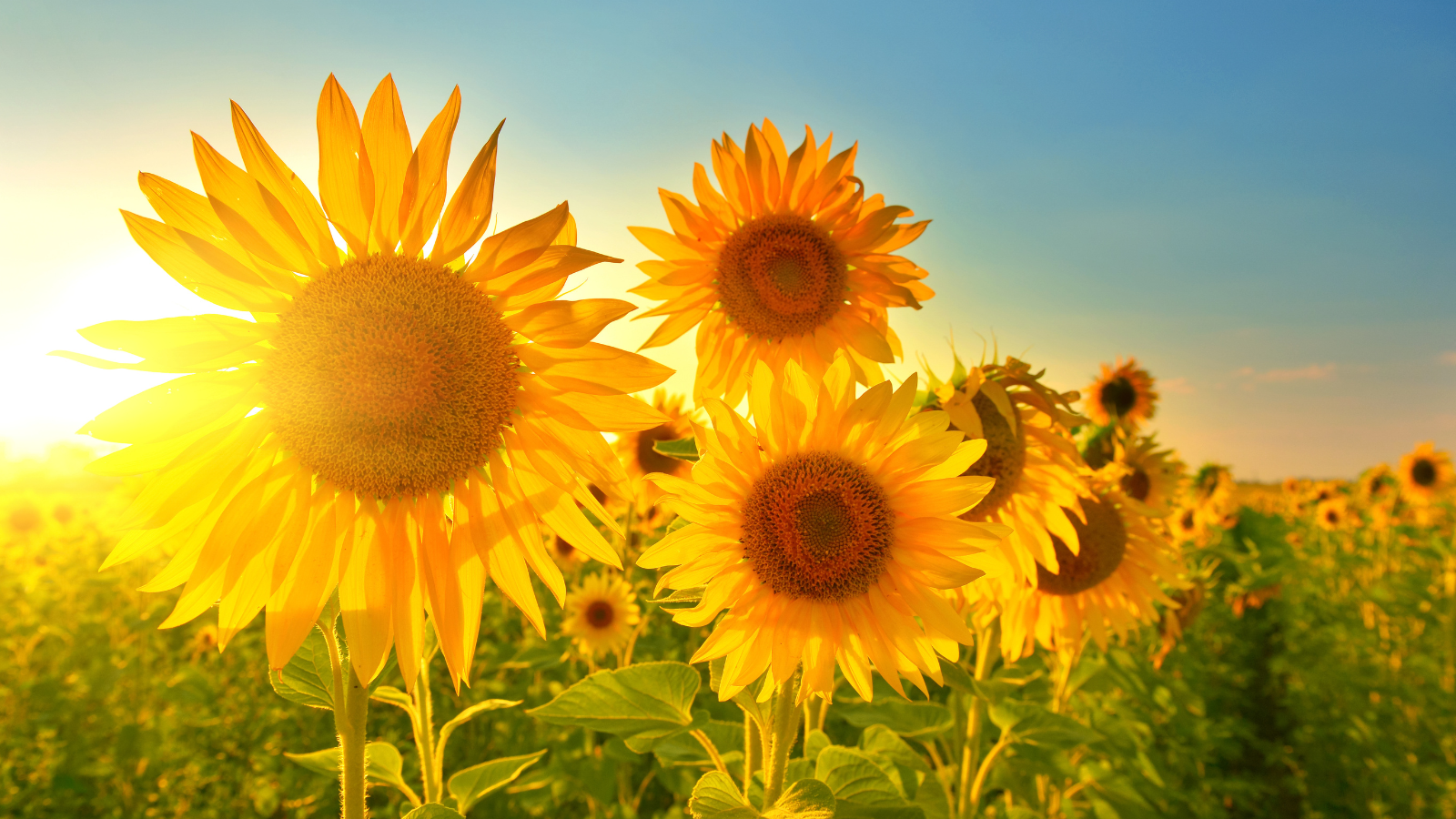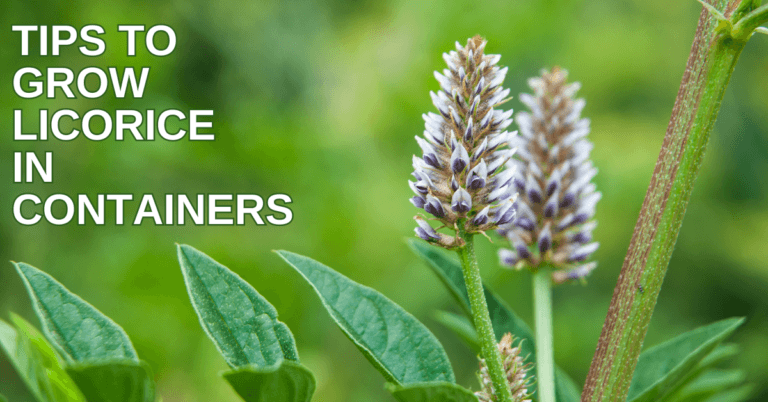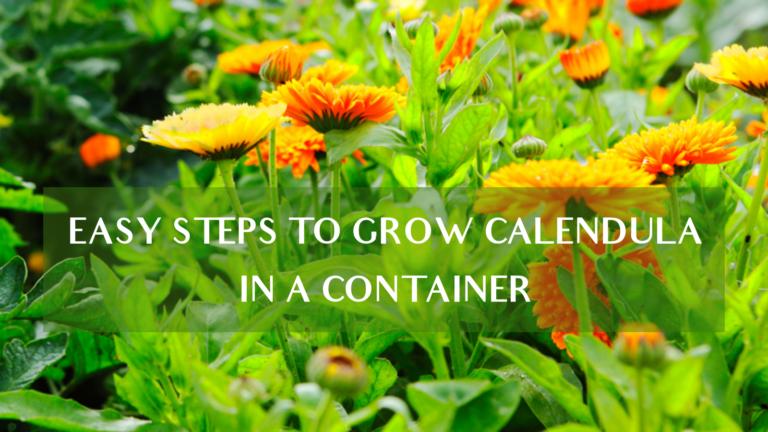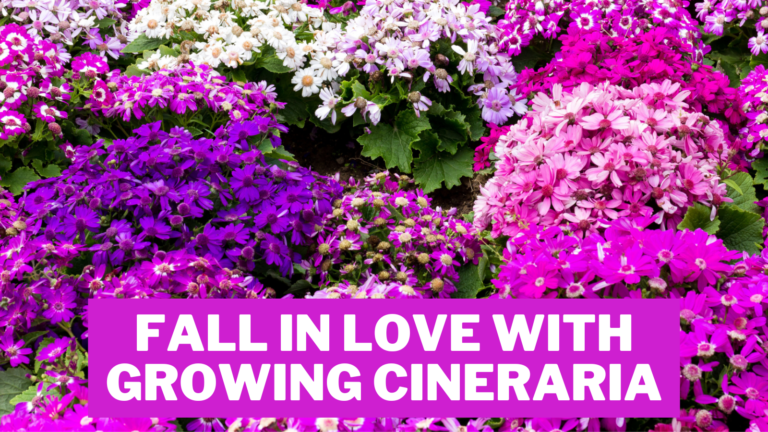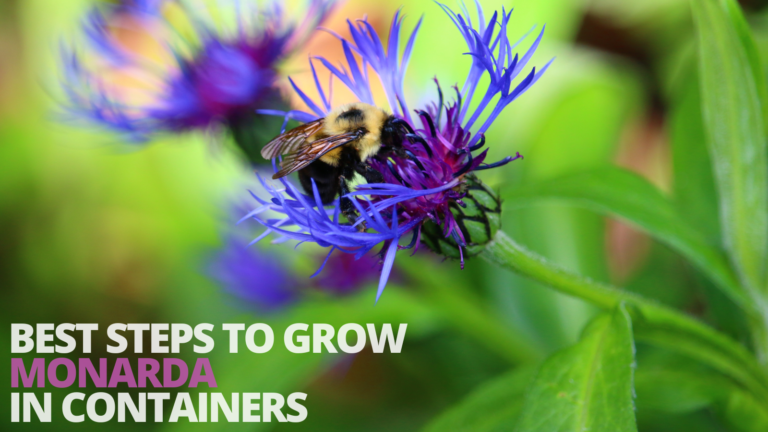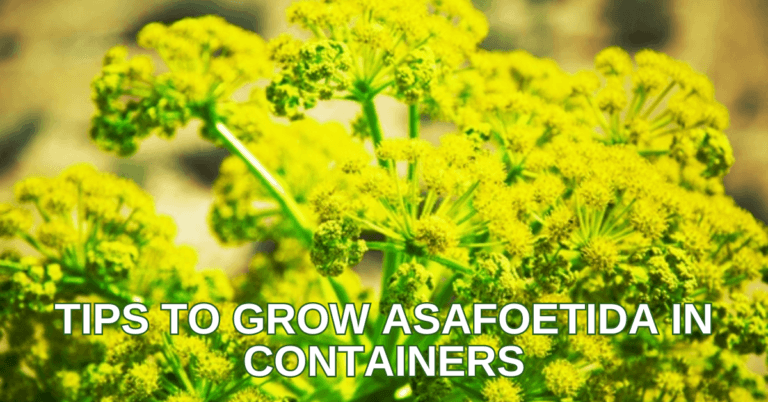Easy Steps To Grow Sunflowers In Containers
Easy Steps To Grow Sunflowers In Containers
Sunflowers are one of the most widely grown annual plants and one of the cutest and cheeriest to grow.
Although enormous varieties reach the sky and tiny varieties only reach a foot high, you don't need a large garden to grow sunflowers.
You can plant these traditional summer bloomers in buckets, fabric planters, or even plastic pots. To learn more about how to grow sunflowers in containers, continue reading.
History & Origin Of Sunflowers
Ah, the solid and magnificent sunflowers! Since its inception in 1000 B.C., sunflowers have been grown for urgent medical use and as a vital food source (for people, livestock, fowl, and other decorative plants).
No native North American plant has had the same influence and significance as the sunflower.
The ubiquitous annual species Helianthus annuus, or the common sunflower, whose round flower heads, combined with the ligules, resemble the bright sun, is commonly referred to as a “sunflower.” The name “sunflower” comes from the Greek words “helios” for “sun” and “anthos” for “flower.”
The sunflower has long been one of the most important oilseed crops in the world. Before corn and beans were introduced to America, the early American inhabitants utilized the sunflower and made the most of this lovely flower's endowments.
People have and still do consume the seeds, grind the kernels into flour, and extract the oil to use on their hair and as a cough remedy. The pollen and flower petals were used to create dyes for clothing, baskets, and face paint.
Back then, people used sunflowers for everything from wart removal to healing snake bites and sunstroke to curing coughs by brewing the oil into tea.
Today, people use sunflower oil topically to treat skin conditions like psoriasis and arthritis, help with constipation, decrease cholesterol, and heal wounds.
Types Of Sunflowers
Sunflowers, in all their varieties, are often simple to maintain and difficult to eradicate. They come in various kinds, including gigantic, dwarf, and even colourful sunflowers.
Despite the variety of forms this plant can take, the care needs for most of them are similar. Sunflowers require reasonably loose soil that drains well.
They are not particularly picky plants, although they do prefer acidic soil. Ideally, you should know the best variety suitable for your location to grow sunflowers in containers.
1. Skyscraper Sunflower
The Skyscraper is a giant sunflower variety that can grow as tall as 12 to 14 feet. They produce enormous flowers, at least 16 inches across. The flowers feature an intense orange center with a bright yellow outside.
To prevent them from collapsing beneath the weight of the enormous blossoms, their long, thick stalks need to be given extra support.
You can create a beautiful garden by surrounding it with a base of several chrysanthemum varieties.
2. Little Becka Sunflower
One of the tallest varieties of dwarf sunflowers, Little Becka grows to almost two to three feet. Their multicoloured flower is their most distinctive characteristic.
They give off flowers with burnt orange centers, deep red centers, and orange tips. This particular variety of sunflowers is one of the most distinctive ones available because of the colours it uses to create a halo effect on the flowerhead.
They spread out and produce many flowers, which helps your garden stand out with colour.
3. Sunrich Lime Sunflower
Along with a few other sunflower varieties, this one lacks pollen. These Topolino produce a single flowering bloom on a stem devoid of branches. Instead of the usual dark center, the center disc is an unusual shade of lime green.
This annual flower blooms every year, creating an impressive display that can grow 6 inches wide on a stem that is 6 feet tall.
This is a good option if you want to watch one of the sunflower varieties grow quickly because they mature in just 60 days.
4. American Giant Hybrid Sunflower
The American Giant Hybrid is one of the most widely grown gigantic sunflower cultivars. They have a maximum height of 16 feet and occasionally even more. They are frequently grown as competition flowers because they are one of the tallest types.
Their blooming period is 65 to 75 days. They grow flowers 10 inches across and are bright yellow with a dark brown core. They have thick, strong stems that can support the weight of the enormous blossoms.
5. Russian Mammoth Sunflower
Russian Mammoth is a low-maintenance variety of sunflower known as the Common Sunflower. This enormous sunflower can reach 9 to 12 feet and bear flowers 14 inches wide.
They produce bright yellow flowers with a chocolate brown center in the late summer when they bloom.
Since they thrive in most varieties of moderately fertile soil, they require little maintenance.
However, they require planting in a protected area due to the heavy flowerheads' potential for breaking if caught in the wind.
This flower is excellent for boosting pollination drawing birds, butterflies, and bees. The edible seeds are a snack for birds and squirrels. It is possible to gather seeds and roast them for human consumption.
6. Giant Sungold Sunflower
The Giant Sungold kind of giant sunflower proliferates, with a maximum height of 5 to 6 feet. They produce fluffy golden flowers resembling pom poms, setting them apart from other enormous sunflowers.
Thanks to their thick layers of petals, these flowers can grow up to 6 to 10 inches broad. In addition to luring beneficial pollinators, they give your garden beauty and feel. They are perennial flowering plants that prefer moderately fertile soil and full sun.
7. Firecracker Sunflower
A semi-dwarf variety of sunflowers with double-hued flowers is called the Firecracker. Since it can grow to a height of 90 cm, it is ideal for containers and establishing garden borders.
They produce 4 to 6-inch wide, pollen-free flowers. The flowers have a dark brown center and petals that mix orange and gold. Full sun and moderately fertile soil are ideal for them.
8. Teddy Bear Sunflower
Nearly a dwarf form of the Giant Sungold, the Teddy Bear. They feature fluffy petals with two layers. 2015 saw this variety win the Royal Horticultural Society's Award of Garden Merit.
These plants can grow as tall as 16 to 24 inches, and their fluffy golden blossoms bloom in the middle of the summer.
This variety's edible seeds and petals are one of its distinguishing characteristics. The petals can be used as a form of salad or cake garnish.
9. Suntastic Yellow Sunflower
A dwarf sunflower variety called Suntastic Yellow only grows to twenty inches tall. However, it produces large blossoms about six inches across, with golden petals and a black center.
They produce at least 20 flowers per plant and bloom in less than 65 days after planting. Because they flower early and grow in groups, they are perfect for window boxes and garden beds.
10. Elf Sunflower
Elf sunflowers are a scaled-down variety of regular sunflowers. They are a dwarf type that stands only 14 inches tall. The four-inch-wide flowers are bright yellow with a brown core.
They look fantastic when planted in clusters in flowerbeds or containers. They are also beautiful additions to flower bouquets that may be used to animate space.
They are sown in the spring and blossom in the late summer. Why not plant them when gardening in your backyard and create your paradise?
11. Gummy Bear Sunflower
This fuzzy-headed sunflower is a requirement for any sunflower garden because of its endearing name. The 3—to 5-inch blooms make amazing cut flowers.
12. Florenza Sunflower
The rusty ring contrasts beautifully with the pale yellow tips. It is ideal as a pretty backdrop or a focal point in sizable containers.
The plants have 12 cm (5 in) blooms and are 120 cm (4 ft) tall. It's a cut-flower grower's fantasy.
After the soil has thoroughly warmed up in the spring, direct seed in the garden, covering the seed with ½ cm (¼ in) of soil.
Keep the soil moist as soon as the seedlings appear. If you want earlier flowers, start your seeds four weeks before transplanting them outside.
It germinates best at 21°C (70°F) in 7–10 days. It increases at 16°C (62°F). For strong, healthy plants, fertilize with 10-52-17 and liquid seaweed every two weeks. Plants in a garden should be 40 cm (16 in) apart.
Growing Sunflowers In Container

1. Choose The Right Container
The appropriate containers are the first step to growing sunflowers successfully in pots. Size and drainage are the two main factors to consider when choosing containers.
Read the seed packet description to determine how big the variety of sunflower you've picked will grow.
What kind of sunflower is it? Or a tall variant with only one stem? Is it a giant sunflower with branches?
Matching the mature size of the variety to the size of the pot can ensure that you provide enough space for good root growth.
Sunflowers should be planted in plastic or fabric containers with a minimum diameter of 10 to 12 inches and a capacity of 7 to 10 gallons.
Select the appropriate container size based on the height of the flower you intend to plant and the number of flowers you want in each pot. Typically, a 12 to 16-inch (30 to 41 cm) pot can plant most dwarf sunflowers.
- A pot accommodating at least 5 gallons is necessary for mammoth sunflowers (19 L).
- If you are using a container that has already been used for something else, ensure it is sterile and clean. A reused container may also need drainage holes. Without drainage holes, your seeds can decay.
- Put a plate or saucer underneath the container to catch any water leaking.
2. Soil Requirements To Grow Sunflowers In Containers
To plant sunflowers, pick topsoil or potting soil abundant in nutrients. Compost can also provide food for your sunflowers.
- The topsoil of high quality will have an organic content of at least 3% and a pH between 5.5 and 7.5. These numbers will be listed on the bag.
- If you use high-quality topsoil, you don't need to add any drainage material, such as sand or rocks, to the bottom of the container. Doing so restricts water flow and may prevent your pot from draining correctly.
3. Sunlight To Grow Sunflowers In Container
Full sun is ideal for sunflowers. Your plants will flourish in a protected area with at least six hours of direct sunlight daily.
You might need to water your sunflower plants somewhat frequently because of how quickly your pots can dry out because of all the sunlight. Sunflowers are light-loving plants that require full sun to thrive, as their name would imply.
A location that offers sunflowers in pots at least 6 to 8 hours of direct sunlight each day is ideal. The stalks may extend and collapse as they reach the sun if grown in less light.
Sunflowers need a place with direct sunlight and protection from the wind. While plants deprived of sunlight and warmth tend to be tall and leggy and produce small and fewer flowers, sunflowers can tolerate some shade.
4. Watering
As they mature, sunflowers require more water than most other plants. Make sure the soil is always wet and has good drainage.
While the seeds germinate, give your sunflowers at least 2 gallons (7.6 L) of water per week. Lack of water at these early stages will result in sunflowers with thin, frail stems that cannot upright support the heavy flower head.
If water drains through your soil reasonably rapidly, it is well-drained. A drainage issue is indicated by puddles or standing water in your pot. Your sunflower seeds should begin to sprout into little seedlings in seven to ten days.
Continue watering the seeds daily during this period, and ensure the soil is wet, especially around the seeds. If you plan to grow your sunflowers outside, you might wish to cover the seedlings with netting or baskets to keep birds away.
Sunflowers planted in containers require specific irrigation requirements that must be monitored. Compared to those produced in a garden, they will dry out faster. A standard guideline is to offer one inch (2.5 cm) of water per week, depending on the weather.
Simple growing techniques are all that are needed for sunflower care. Although sunflowers need a lot of water to germinate, they only need an inch of water every week during the growing season. Once a week, water easily using a watering nozzle until the top 6 inches of soil is damp.
5. Temperature
Sunflowers grow best at temperatures between 70 and 78 degrees Fahrenheit. However, as long as their moisture requirements are met, they can withstand intense temperatures.
Most sunflower seeds will germinate when the soil is between 70 and 85 degrees F. Sunflowers grow best when planted right before the soil reaches this temperature. Be on the lookout for a ground temperature of 60 to 70 degrees.
This will be three weeks after the last frost in most places. The temperature range for sunflowers is roughly 10° lower and higher than maize's.
According to North Dakota State University data, sunflower plants can tolerate frost temperatures as low as 25°F with only moderate damage once pollination is over and 10-14 days after petal drying occurs.
6. Plant Sunflowers In Pots
When ready to plant them, fill them with the growing media and gather your seed packets. If you wish to start the blooming season early, you can buy seedlings of container-friendly cultivars like Sunfinity at nearby nurseries.
Remember that plant spacing affects the mature height of the flower stalk and the mature size of the flower head. If sunflowers' containers are overcrowded, they will grow shorter and produce fewer flowers.
If you want full-sized plants and blossoms, give them room to grow. Sunflower seeds should be sown directly at a depth of ½-inch. Check out my helpful spacing instructions below to find out how far apart to plant sunflowers:
- Single-stem tall sunflowers: Grow one plant in a 3-gallon container, three plants in a 10-gallon pot, or space plants 8 inches apart.
- Single-stem dwarf sunflowers: Grow one plant in a gallon container, three plants in a five-gallon pot, or space plants six inches apart.
- Branching tall sunflowers: Grow one plant in a 7 to 10-gallon pot or space plants 18 to 24 inches apart.
- Branching miniature sunflowers: Grow one plant in a 3-gallon container, three plants in a 7-gallon pot, or space plants 12 to 18 inches apart.
- Giant sunflowers: Grow one plant in a 10 to 15-gallon pot or space plants 18 to 24 inches apart.
7. Fertilizing
Although sunflowers don't always require additional feeding to flourish, fertilizer can enhance the vibrancy and intensity of the colours on your flower heads.
Start with a liquid plant fertilizer with high nitrogen content, then move to one with higher phosphorus as the bud blossoms.
You can add diluted fertilizer to the water of your sunflower plant. Avoid overfertilizing your sunflower since the stem may break when the top inch (2.5 cm) of soil seems dry; water the plants.
Apply a liquid fertilizer high in nitrogen to the flowers first; then, when a bloom emerges, switch to a liquid fertilizer high in phosphorus.
Regular fertilizers with nitrogen, phosphorus, and potassium will effectively fertilize sunflowers. Granular fertilizer is best in the spring because nutrients are released gradually over time.
If the soil is deficient in nutrients, add a tiny amount of granular fertilizer before planting.
Except in cases with a significant N carryover, nearly all sunflower harvests require some N fertilizer.
Generally, a 1,500-pound-per-acre sunflower yield will need the same quantity of N fertilizer as a wheat crop that yields 30 bushels per acre (about 75 pounds of nitrogen per acre).
8. Harvesting Sunflower Seeds
If your sunflower variety has edible seeds, let the flower wither on the stalk. The seeds will also ripen and dry.
Cover the birds with netting or a paper bag to prevent them from eating all your sunflower seeds if they grow outside. Sunflower seeds with white stripes on them that are black or gray are typically edible.
The seeds are generally ready for harvesting when the back of the flower head becomes brown. The seeds can be stored and dried in an airtight container for up to four months.
You can also freeze sunflower buds if you need them for extended periods, or you can consume them.
Blanch them to remove the bitterness before steaming or boiling them for three minutes. They taste good.
9. Pests & Disease Of Sunflower Plants
The plant becomes defoliated and dies due to the dark brown lesions that develop on the leaves and merge to form irregularly shaped lesions.
Hot conditions and frequent rains are favourable for disease onset.
The fungus can live in crop debris or on suitable weed hosts, and infected seeds can spread the disease.
Remove affected leaves by pruning; maintain enough plant spacing to reduce humidity around plants and encourage good air circulation; apply the proper foliar fungicide to manage the disease.
You can use various oils, including safflower, peanut, sunflower, or soybean. To control insects, including aphids, mealybugs, scales, and mites on sunflower plants, mix 2 grams of this combination with one cup of water.
Water-soaked circular or angular spots with a greasy, greenish appearance on lower leaves.
Lesions are often gray with a darker border; some may have a narrow yellow border. Lesions may include small, black fungal fruiting bodies.
The bacterium that causes the disease is poorly understood, and it is thought that splashing water can disperse its spores.
The condition will progress quickly during moderate to warm weather and heavy precipitation.
Plant disease-free, high-quality seed, rotate your crops away from sunflower for three years, mainly if you use overhead irrigation, and treat the Septoria leaf spots with fungicides as little as possible.
Uses For Sunflowers
Sunflowers can add beauty to the organic garden. These eye-catching, vibrant flowers come in various sizes and grow well in organic soil.
Some breeds can grow as tall as six feet or more by the end of the summer. Here are five unexpected uses for sunflowers and their seeds:
1. Attract Birds And Butterflies
Both butterflies and birds adore the colourful flowers' nectar, and later in the year, the seed heads of the latter species may provide food for the birds.
Now, prepare the birds to eat the seeds if you are trying to harvest them. When the sunflower head is almost time to harvest the seeds, place a paper bag over it to protect the seeds.
2. Sunflower Seed Coffee
Sunflower seed hulls can be used in place of coffee. Seed hulls are ground after being browned.
For every cup of water, add 1 teaspoon of hulls and steep for about 3 minutes. If you prefer more ground hulls, increase the amount.
With maple syrup, sunflower seed coffee can be sweetened. Here are the instructions for making sunflower seed coffee from Jerry Mack Johnson's Old-Time Country Wisdom & Lore: 1000s of Traditional Skills for Simple Living.
3. Sunflower Seed Flour, Milk And Paste
Make high-protein sunflower seed flour, meal, or paste from raw sunflower seeds to use in dishes like meatloaf, pancakes, and stuffed dates.
About one cup of ground sunflower seeds yields one cup of flour. Sunflower seed meal is a less expensive alternative to almond meal.
4. Used To Create Paper
Paper has previously been made using sunflower stems or stalks. The stems contain fiber that can be used to make paper.
An old publication from 1914 called The Utilization of Sunflower Stalks in Paper Manufacture contains a study on how to make paper by cooking the stalks and then beating and bleaching the pulp to create paper.
5. Nuclear Radiation Removal
The roots of this plant effectively remove radiation from the soil. They were used to clean up the Fukushima and Chornobyl disasters.
They act as a true guiding light for recovery and hope. This incredible facility has come to represent a world free of nuclear weapons.
Now that you have a better understanding of why this plant is so amazing, perhaps more than any other, let me suggest that you use it. It has many uses and advantages, and I'm sure there will be more for us to learn.
6. Sunflower Oil For Cooking
Sunflower seeds are the source of natural, health-improving sunflower oil. This oil is light in colour and flavour. Sunflower oil is the most adaptable vegetable oil because it can be used in almost any recipe. Famous global chefs favour this oil for its exceptional frying capabilities, mild flavour, and related health advantages.
Sunflower Seeds Nutrition
The following nutritional information is for a one-ounce serving of dry roasted sunflower seeds without salt:
- Calories: 165
- Total Fat: 14 grams
- Vitamin A: 2.5 IU (0% Daily Value)
- Calcium: 20 milligrams (2% DV)
- Monounsaturated Fat: 3 grams
- Polyunsaturated Fat: 9 grams
- Vitamin C: 0.5 mg (4% DV)
- Iron: 1 milligram (6% DV)
- Cholesterol: 0 milligrams
- Saturated Fat: 1.5 grams
- Sodium: 1 milligram
- Protein: 5.5 grams
- Sugars: 0 grams
- Carbs: 7 grams
- Fiber: 3 grams
Health Benefits Of Sunflower Seeds
Studies have shown that sunflower seed consumption is associated with several health advantages, including a reduced risk of developing conditions like high blood pressure or heart disease.
Additionally, sunflower seeds contain nutrients that can strengthen the immune system and increase energy.
Here are a few advantages of sunflower seeds for your health:
1. Improved Heart Health
Sunflower seeds are abundant in “healthy” fats, polyunsaturated and monounsaturated. Fourteen grams of fat are present in a three-fourths cup serving of sunflower seeds.
Studies have linked the consumption of seeds, including sunflower seeds, to lower rates of heart disease, high cholesterol, and high blood pressure.
2. Inflammation Reduction
Sunflower seeds can have anti-inflammatory effects for people with acute or chronic inflammation.
Flavonoids, vitamin E, and other plant substances in sunflower seeds have anti-inflammatory properties.
According to a study, eating five or more times per week of sunflower seeds and other seeds led to lower levels of inflammation and lowered risk factors for a number of chronic diseases.
3. Improved Energy Levels
Sunflower seeds contain a lot of protein, which naturally helps to increase energy levels. However, other nutrients like vitamin B and selenium can also help you stay energized.
Sunflower seeds contain vitamin B1, also known as thiamin, which can aid in converting food into energy and keep you active all day. Selenium helps your body receive more oxygen by increasing blood flow.
4. Reduces Risk of Cancer
Sunflower seeds contain a phytosterol called beta-sitosterol that aids in preventing breast cancer. It reduces the size of the tumour, stops metastasis, and inhibits the growth of tumour cells.
Sunflower seeds' rich antioxidant content also lowers the risk of developing cancer. Consuming these seeds lowers the risk of developing colon cancer.
5. Control Diabetes
Patients with type 2 diabetes mellitus can lower their blood sugar levels by eating sunflower seeds. What is type 2 diabetes?
Because the cells do not react to insulin as they should, it is a chronic condition that causes high blood sugar levels in your body.
Increased hunger and thirst, frequent urination, unexplained weight loss, fatigue, and blurred vision are some symptoms.
6. Helps To Lose Weight
Sunflower seeds are a good source of fiber and protein. They prolong our feeling of fullness, causing us to eat less and consume fewer calories. This aids in weight loss.
7. Beneficial During Pregnancy
Vitamin E, a highly beneficial nutrient for prenatal health, is abundant in sunflower seeds. This indicates that vitamin E aids in the development of the developing fetus.
Sunflower seeds are a good source of nutrition for expectant mothers and their unborn children.
Conclusion
If you adore sunflowers but lack the gardening space to grow the enormous blooms, you might wonder if you can grow them in containers. I hope my tips will help you grow sunflowers in containers.
In conclusion, growing sunflowers in containers can be a rewarding experience. They bring beauty and a touch of nature to even the smallest spaces.
Whether you're limited by space or want to add a splash of colour to your balcony or patio, sunflowers are a versatile and cheerful choice.
With the right care and attention, you can enjoy these sunny blooms all season long, brightening your days and attracting pollinators to your garden.
So why try it and see the joy growing sunflowers in containers can bring? Happy gardening!
I trust you enjoyed this article on the Easy Steps To Grow Sunflowers In Containers. Please stay tuned for more blog posts soon. Take care!
JeannetteZ
>>>Please click here to read my all-inclusive article about Container Gardening<<<
>>>Are you interested in homegrown herbs and medicine? Please click here to find out more about it!<<<
Your Opinion Is Important To Me
Do you have thoughts, ideas, or questions? I would love to hear from you. Please leave me your questions, experiences, and remarks about this article on the Easy Steps To Grow Sunflowers In Containers in the comments section below. You can also reach me by email at Jeannette@Close-To-Nature.org.
Disclosure
This post may contain affiliate links. I earn from qualifying purchases as an Amazon Associate and other affiliate programs. Please read my full affiliate disclosure.
You might also enjoy these blog posts:
Easy Steps To Grow Echinacea In Containers
Easy Steps To Grow Allspice In Containers
What Is The Best Bach Flower Remedy
List Of Flowers For Healing And Strength
21 Most Popular Dried Flowers To Store

